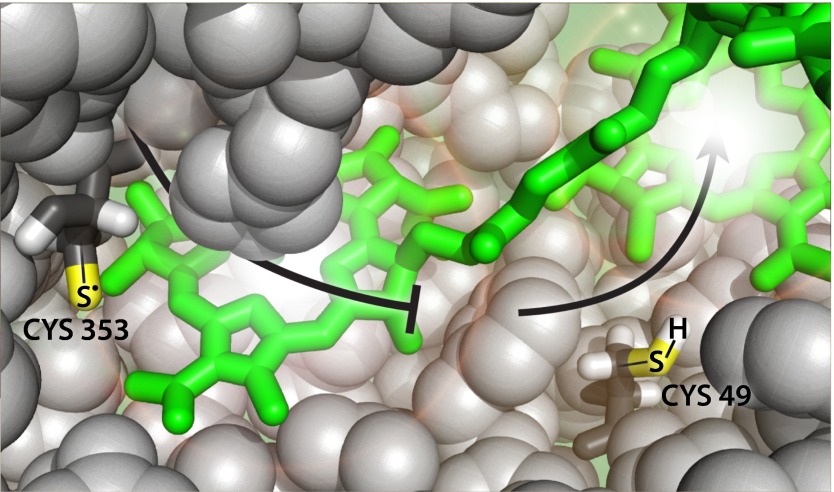Fig. 1.
The oxidation states of the cysteine residues control the excitonic energy transfer through FMO to the reaction center. Energy flows when these residues are reduced, but nonradiative relaxation quenches the excitation when they are oxidized. In this regard, the redox potential of the environment effectively gates energy flow through FMO, in analogy to an excitonic transistor. This image was created in PyMol using file 3ENI from the Protein Data Bank.

